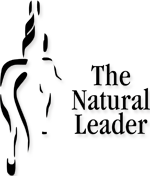 That had to be my thought as I picked the colt out of the pen, a nice looking, well put together red dun. I was told he was maybe three or four but there was no touching him to confirm such a guess. I paid for a “belt” according to the register receipt. We drove him through the loading chute and into the trailer, he was now my project.
That had to be my thought as I picked the colt out of the pen, a nice looking, well put together red dun. I was told he was maybe three or four but there was no touching him to confirm such a guess. I paid for a “belt” according to the register receipt. We drove him through the loading chute and into the trailer, he was now my project.
Getting him out of the trailer and into a stall was also relatively easy – open one door, then the other and in a flash he was in the barn. In a matter of hours his world had been turned upside down, the horse was literally vibrating in the stall. My expectation was let him calm down, feed him, shower him with love and surely he will come around.
After a couple of days in the stall it was not getting less dangerous to handle him, he made it clear he had no intention of letting me near. The slightest move on my part ran through him like a bolt of electricity. Having started numerous younger horses I admit maybe this one was a little more than I had anticipated and prepared for. Not a fan of keeping a horse in a box I decided to put him into the smaller paddock. With space to move he would not feel so trapped so connecting should be easier and safer.
What followed was a series of days where I had to concoct ingenious ways to get him from one location to the other – I still couldn’t touch him. I also began to fully appreciate why one should design their pens, paddocks and round pens on paper first. It was through this process that his name came to me – everything was about doing things in very small pieces, there was no rushing anything and giving him time to process requests was something I had to allow. He was the colour of peanut butter so Rhys’ pieces he became.
After a few days of panicked departures and abrupt turns he was starting to slow down, wait and look to me. I was not, after all, trying to kill him.
Years later we have come to an agreement and I admit it has not been an easy ride. I had to decide that one of us must change. Together we had a few really tough days, we both survived because I stopped worrying about failing. He still has his ya-buts, is quick to point out an inconsistency in my behaviour and finally is willing to give something an honest try. Rhys may not be able to hold it together through a new experience but he looks to me for the support and confidence he lacks.
My experience with Rhys is the perfect parallel to what starting a new business has been like. I took on something few would, started a process where my previous experience seemed all but irrelevant and suffered numerous bumps and bruises along the way. The learning I have gained from both is about me, how I manage change, approach adversity, develop a perspective on the odds, handle frustration or fear of failing.
Whether starting a new business or a horse they require tenacity, an unwavering belief you can learn something new, a steadfast willingness to learn from mistakes unyielding optimism and time. Neither are something you can short cut to the finish. Both are about developing awareness, relationships and trust. So I am thrilled to report like my experience with Rhys, The Natural Leader is doing better than ever this year.









